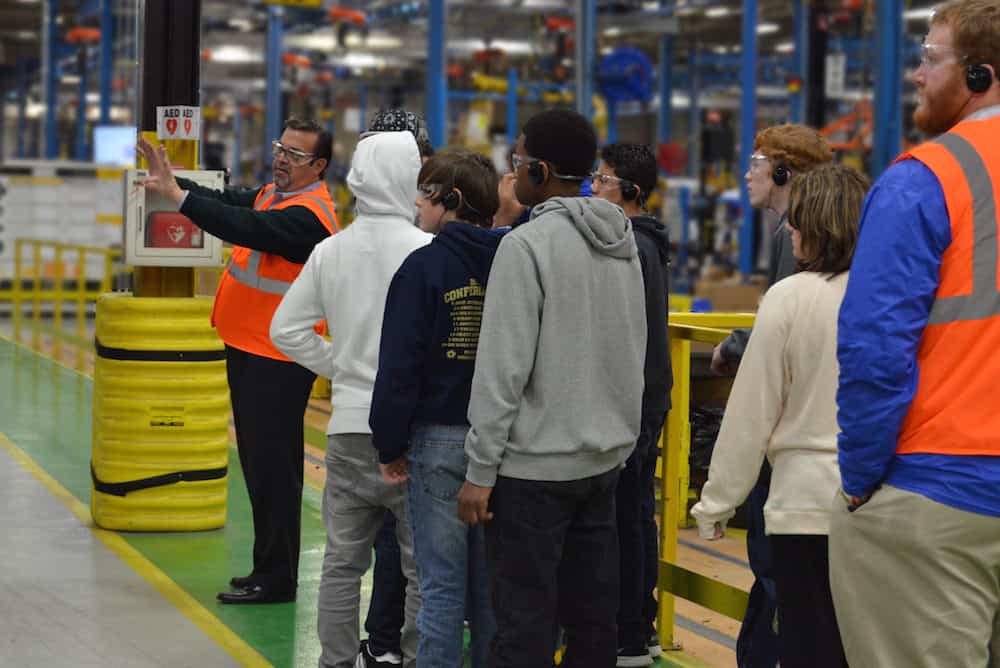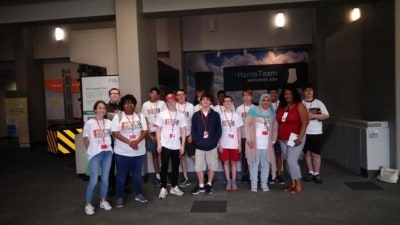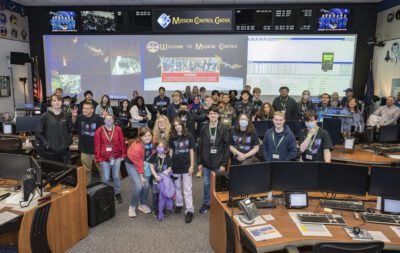
One of the professional development sessions I participated in as a Kenan Fellow was an opportunity to talk to people in the political arena. These stakeholders included state representatives and people who work for political organizations from different sides to advocate for our students’ and teachers’ needs. I posed a question to the panel,
“Why don’t we have vocational high schools in North Carolina?”
State representatives in both parties were on the same page: They said students need postsecondary education to succeed so vocational high schools were not the answer. While it was nice to see both sides agree, I think there needs to be a closer look at the various benefits of vocational high schools.
Practical applications
Let me start with a simple story from my classroom. We have a part of our day in our middle school called “Smart Block” where students can get extra help to support their academic skills. Two of the days I teach math during this time. Very few middle school students want to come get extra math help unless they’re required to come. But when I tell them, “lets work on your math homework for part of the time and the other part you can work on building circuits with my materials,” the students actually ask me if they can come. I show them the connection between the math they are learning and building circuits with my collection of Snap Circuits, squishy circuits, and littleBits.
It is a win-win situation. The kids not only are more interested in learning math, but also learn how circuits work. It is no secret kids love hands-on learning. Seeing a connection to what they are learning and its practical application in the real world sets off a spark in young minds. This exposure might even make these reluctant students consider a job in a STEM field in the future.
Economic imperative
I attended another professional development in Scotland Neck on the future of electricity, which was sponsored by UNC-Chapel Hill’s Environmental Institute and funded by Duke Power. I learned about electricity but also about Duke Power’s Power Careers Program. According to their representative at the event, almost half of their workforce will retire soon and replacements are needed. The new Power Careers Program connects graduating high school students to paid internships and scholarships for community college. Many of these students are hired upon completion.
The leaders of North Carolina are well aware of how important STEM education is to the state’s economic success. As stated in DPI’s STEM Education Strategic Plan:
“In North Carolina there are approximately 400,000 STEM-related jobs, and more than 70,000 net new STEM-related jobs will be created by 2020. This reflects a growth rate greater than for all other jobs in North Carolina. STEM-related jobs in North Carolina pay 64 percent more than the average job. These STEM-related jobs will serve as the economic engine driving this state’s future. Yet, even during the periods of highest unemployment, companies reported difficulty finding qualified workers for STEM-related jobs.”
My hope is that our education system could go one step further by offering opportunities earlier. Imagine if high schools had classes that provided skill building through a vocational program. Maybe more students would want to participate in career programs like the one mentioned above. It’s a win-win situation when we are preparing students for many job openings we will have in North Carolina while getting them excited about learning at the same time.
Improving graduation rates
One just needs to look at graduation rates in NC to see we need more tools in our educational toolbox. There are disparities between high school graduation rates of students who are economically disadvantaged, with limited English proficiency, with disabilities, between races, and among genders. Vocational high schools would help close these gaps by giving another way for students to graduate and have a chance to be economically secure.
There are many examples of successful vocational high schools across the nation. In Massachusetts, vocational high schools have lower dropout rates than traditional schools. In Delaware, about one-third of the eighth grade students in New Castle County’s public schools apply to attend one of four vocational high schools, according to Kathy Demarest, who oversees the admissions process. About 80 percent receive a spot. “Employers hire our kids. Our students get into two- and four-year colleges. They are successful,” says Demarest. In New York, the graduation rates in the city’s career and technical schools are higher than traditional public schools.
The above examples all come together to form a clear picture; if done well, vocational high schools could help increase the graduation rate for all, but especially those groups who have the lowest rates and greatest need for economic security. In education, one size does not fit all. While going to college is the ideal benchmark for many, college is not for everyone. Not everyone has the aptitude or interest in college, but there is a need for all to lead a life of economic security.
As seen in the below chart, students who do not finish high school have a 31 percent chance of being in poverty.
https://www.ednc.org/data-viz/poverty-rate-educational-attainment-2014/
While there is a strong correlation between more education and a higher salary, there are many well-paying jobs that do not require an advanced degree. From bricklayers to transportation inspectors, and power plant operators to distribution managers, these blue collar professions are often glazed over by our schools. And while we must continue to prepare those students for whom college is a viable option, we also have an obligation to the ones for whom college is not in consideration.
Benefit to college students
Furthermore, vocational schools can help the students who want to go to college. Vocational courses help students gain work experience and better focus on what they want to study in college. Those vocational students who end up pursuing higher education also gain experience that benefits them when applying for jobs after college. According to a 2014 report from the Economic Policy Institute, recent bachelor’s degree recipients are starting at roughly 8.5 percent unemployment and 16.8 percent underemployed in fields that don’t require any degree. Around half are starting in entry-level jobs that don’t use their degree at all.
The cost of college is ever increasing. College graduates in the class of 2015 across the country ended up with $35,000 of debt on average. Fortunately, we have high-quality state universities and a wonderful and expanding community college system in North Carolina. But debt is a reality here too. In 2014, North Carolina college graduates averaged over $24,000 in debt.
The 2014 graduation rates for undergraduate students from the 16 North Carolina public universities are striking. The 6-year graduation rate for students who began their pursuit of a bachelor’s degree in 2008 was 67.5 percent. The 4-year graduation rate for students who began in 2010 was only 42.6 percent. While the causes for the differences vary from not being prepared, personal struggles, changing majors, or other such things, it’s becoming an acceptable norm for students to extend their undergraduate education beyond the standard four years. Many more who do not graduate at all still incur debt before dropping out.
Students in vocational high schools get chances to pursue traditional trades like carpentry, plumbing, and welding. But recently vocational high schools have started including courses in tech fields such as video game design, engineering, and biotechnology. Modern vocational high schools are no longer teaching the “one job for life” model but instead preparing students for the 21st century employment trend where they may change career paths many times. The idea now in vocational high schools is to make students both career and college ready.
Close the leaky pipeline
Vocational high schools would be a way to help increase graduation rates, increase qualified STEM workers, further prop up our higher education system, and help students get career choices that offer them satisfaction and stability. Many vocational high schools are closing the leaky pipeline to STEM careers by getting more students interested in STEM fields. They are engaging populations who are underrepresented in STEM fields such as women, minorities, low-income students, ESL students, and students with disabilities.
We cannot afford to let disparities in our state’s current system continue to grow or lose any sector of our population that wants to participate in STEM careers. Vocational high schools have been proven in other states to help engage these populations in addition to the benefit they provide all students. By combining engaging hands-on activities with high-quality STEM learning we can help educate students to become qualified workers in a variety of fields.
Recommended reading



